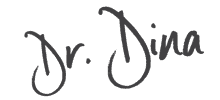Top Tips for Breastfeeding
Women everywhere will tell you that breastfeeding can be a real challenge!
In my own case, it was more challenging than residency, fellowship, and all my exams. My eldest was irritable and colicky and wanted lots of milk and fast. My milk ducts struggled to keep up.
I knew about the benefits of breastfeeding, and we persisted. Looking back, breastfeeding was one of the best things about my early parenting life.
Many people don’t talk about their problems with breastfeeding and wrongly assume it should come easily and naturally. However, as a doctor, I can share that 9 out of 10 women encounter problems with breastfeeding.
Breastfeeding tips may be all you need to get that baby to latch. Go through all breastfeeding tips and determine what one is best for you.
How to Tell if Baby’s had Enough Milk
Babies don’t need anything other than breast milk until they are around six months of age. After that, they get all their nutrients from your milk production.
Your baby is getting enough breast milk if they’re breastfeeding on a schedule and has at least 6-8 wet diapers per day.
You can tell your baby is nursing if you see milk in their mouth; thats a sign of breastfeeding success.
Your breasts will feel softer after feeding since the pressure from fullness has been relieved with each feed.
Finally, your little one appears contented and satisfied after finishing up their meal; you’ll also notice that he doesn’t want to nurse again so soon afterward (which means he gets plenty of nutrition!).
Tips for Breastfeeding
If you’re looking for breastfeeding tips, you’re not alone.
There are so many benefits from milk; it boosts a baby’s immune system, can cure little rashes, and is convenient in the middle of the night. In addition, breastfeeding can be a pleasant bonding experience for both you and your little one.
Here are Some Breastfeeding tips for New Mothers:
#1- Anticipate your baby’s desires and comfort level
It is important to know how often they want to be fed and the amount of time it will take them to eat enough food without being uncomfortable with fullness.
Letting your child determine this information can help establish trust between you both–
#2-When nursing, get comfortable and make sure the baby’s head is in a comfortable position to get proper milk flow.
#3-Using pillows or blankets to help guide the baby’s mouth to the milk supply is fine during the nursing session.
Skin-to-Skin Contact
Try to put your baby to the breast as soon as you can after birth. This creates a hormonal response and a feeling of closeness.
Gently guide your baby’s mouth to your nipple, and then instinct and gravity should take over, and they should begin to suck.
A delay at this time can cause feeding issues later on. Keeping your baby close to your breast can help with some breastfeeding issues.
How to Latch Your Baby’s Mouth
A lot of new moms don’t find it easy to latch their babies. Unless you latch them correctly, the baby won’t get the milk out properly, and your body might respond by slowing down production.
This is the reason a lot of women feel they can’t breastfeed. If feeding results in nipple soreness, it’s worth asking your doctor or an international board-certified lactation consultant to check the latch.
Supply and Demand
One of the benefits of breastfeeding is your body knowing exactly how much milk to produce. The more milk you feed, the more your body will create.
If you are worried you aren’t making sufficient, you can try expressing or pumping extra to help stimulate a better supply.
A baby with at least six heavy, wet diapers and one bowel movement a day, who settles down well after feeds, is likely getting enough milk.
Always check with your doctor to ensure the baby is gaining weight well.
When to Use a Breast Pump
As described above, the more milk you feed, the more your milk flow.
Some women pump after each feed to encourage a better supply of breast milk. However, sometimes this can result in having less milk when the baby is hungry again. If you don’t have enough for the next feed, hold off on the pumping until ready.
Compress
It’s a good idea to compress your breast when the baby is drinking. This will encourage them to continue to suck.
It can also be calming to babies who have a big appetite and want milk quickly, or at least for the first few weeks of birth when the baby’s mouth isn’t that strong.
Keep Hydrated
You have to drink a lot of water yourself to make plenty of milk for the baby. I used to have a big water bottle with me and sip during feeds. At least 2 liters a day is a good guideline.
Feed from One Breast then the Other
It’s recommended you offer one breast before switching to the other, then go back again. Consider the first offering of both breasts as the main dish and the second offering, the dessert.
Once you have drained one breast, the body reacts by making more milk to refill it.
Don’t Feed Times
One of the best tips for breastfeeding is not to watch the clock. Different babies feed at different speeds. One baby might latch well and feed vigorously and be done in ten minutes. Another might prefer to drink more slowly. You will get to know how your baby latches and drinks.
Watch how the baby sucks. You should hear something like ‘suck suck suck suck…pause’ as the baby stimulates the letdown before pausing to swallow. A soft suck without a pause probably means they’re pacifying rather than getting any milk.
How Often to Breastfeed
Offer the breast 8 to 10 times a day, to begin with. Some babies won’t need this many feeds, while others will want more. A healthy baby typically drinks well during the day but wants less during the night.
So long as they are steadily gaining weight, that sounds good, and you can continue to enjoy the benefits of breastfeeding.
Don’t Use Artificial Nipples Too Early
Babies who gain weight consistently and are stable at the breast are usually OK for artificial nipples (e.g., soothers, bottles). Minimal work and a fast flow are what a baby wants.
Bottle-feeding can be faster and easier than breastfeeding. However, babies who get the bottle early on might be frustrated by the slower milk from your breast. In addition, they can get confused if offered a pacifier or bottle, and if they have other liquids, your breast milk supply may decrease.
Try a lactation aid, syringe, or cup if you need to supplement your milk. A lactation aid is basically a straw at your breast where the baby will get pumped milk or formula while breastfeeding.
This will encourage your breast to make more milk. Please work with an international board-certified lactation consultant if you do not think you have enough milk or are troubled by the latch.
Best Foods for Breast-Feeding Moms Milk Supply
Some lactation experts recommend oatmeal and Guinness, and there is some evidence these can help with milk supply.
You can enjoy oatmeal at any time but limit the Guinness to after feeds since it’s best not to drink alcohol for at least an hour before breastfeeding. Both of these foods are optional.
It’s best to eat a range of different foods. Ensure you get adequate protein (meat, fish, eggs, nuts, and beans) as well as plenty of fresh fruit and vegetables plus whole grains. And don’t forget plenty of water.
When in Doubt – Chat with an International Board Certified Lactation Consultant on Breastfeeding Tips
It is prevalent to have some difficulty, discomfort, or other issues with breastfeeding.
A learning curve is involved for both you and your baby to ensure that feeds are a pleasant and satisfying experience.
Hopefully, the above breastfeeding tips are helpful for you.
If you have ongoing challenges, please discuss them with an International Board Certified Lactation Consultant.
Frequently Asked Questions
What are some ways to ensure we get off to the best start with breastfeeding?
Try to offer as much skin-to-skin contact, ensure you remain hydrated, and achieve the best latch possible.
How do I know how often to feed?
Most babies benefit from feeding on demand but check with your doctor to see if you should feed more often.
Breast milk is all about supply and demand – the more often you empty the breast, the more your body should respond to make more milk.
Should I pump in between feeds?
If you choose to pump breast milk, pump directly after a meal to ensure the breast fills again for the next feed.
Should I feed on one breast or both?
Part of feeding management ensures you offer both breasts and even go back again.
Try to offer the first breast, and before the baby is too tired, offer the second as well.
You can even go back and offer the first and second once more.
Avoid letting the baby get too tired from the first breast to ensure they get the faster flowing milk from the second breast before falling asleep.
Is it OK to offer an artificial nipple or bottle?
We do want to ensure the baby is gaining weight well, and sometimes babies require milk top-up. Always talk to your doctor to ensure the baby is growing well.
When possible, we advise avoiding artificial nipples and soothers until the baby is well established on the breast to provide their most positive experience is on the breast to encourage that.
What are the best foods for breastfeeding moms?
Making sure you are eating and drinking enough is the most important thing.
Some people swear by adding oatmeal and Guinness beer to their diets, but this is rarely necessary.
Chat with your international board-certified lactation consultant if you have questions or concerns.
#YouGotThis

Dina is a wife, mother of 4, and adrenaline junky. She loves to share children’s health information from her professional and personal experience. More About Dr Dina.










